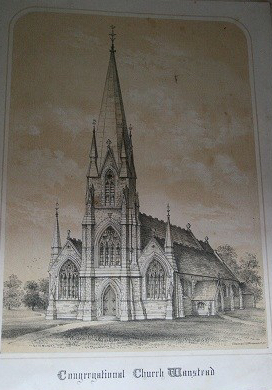
Looking at this imposing Grade II listed church in the east London suburb of Wanstead it would be hard to imagine its very unusual history.
Now well-connected by the Central Line and popular with young families, Wanstead in the 1860s was an Essex village with an expanding population and a growing community of religious non-conformists without a purpose-built place of worship. They had been offered land by a Mr GH Wilkinson, but rejected as too costly the plans drawn up for building on it.

The non-conformists knew a bargain when they saw one, and the bargain they saw was nine miles away on the Euston Road where the junction with Midland Road is now. Here was a ready built church, only a few years old but already doomed by the onward march of the railway.
St Luke’s on the New Road (now Euston Road) was part of a Victorian church-building boom: 2,438 churches were built or re-built in England between 1851 and 1875 and St Luke’s was one of several planned to serve the needs of the ever-expanding population in the large urban parish of St Pancras.
Money had been short and work was slow. It took five years to complete the project and even then funds were insufficient for the tall spire on top of the tower.
The smart new building of Kentish ragstone with Bath stone dressings, designed by architect John Johnson, finally opened in 1861. However, the church was no competition for the might of the railway companies. A mere two years after the church was completed, the Midland Railway Company secured an Act of Parliament that would allow it to extend its line down to London, compulsorily purchase the land in its way (including that occupied by the church) and replace it with the cathedral-like splendour of St Pancras Station.
Pragmatically, the church quickly capitulated, accepted £12,500 for their early surrender of the land and were allowed to keep the fabric of the building.
At this point those astute non-conformists in Wanstead made an offer of £526 to buy the fabric of St Luke’s. This was accepted: Mr Reed a Walthamstow builder dismantled and transported the materials to Wanstead at a cost of £2,000. Even the crypt under the church was brought from the original site! John Johnson, the original architect, was commissioned to adapt his design to fit the rather different shaped and sized plot of land available.
As for St Luke’s, they had enough money from the deal to commission Basil Champneys to build a replacement safely out of the way of the railways in Oseney Crescent, Kentish Town.

References:
http://www.english-heritage.org.uk/learn/story-of-england/victorian/religion/
https://historicengland.org.uk/listing/the-list/list-entry/1393337
